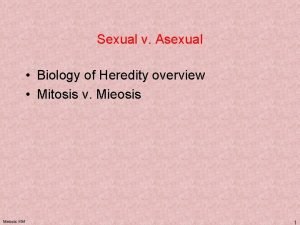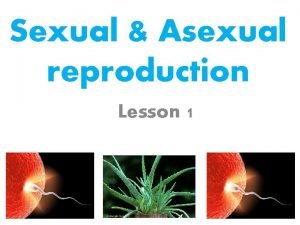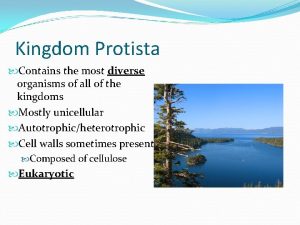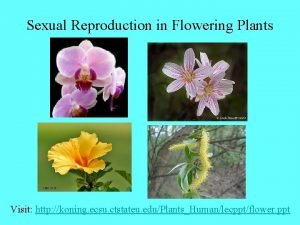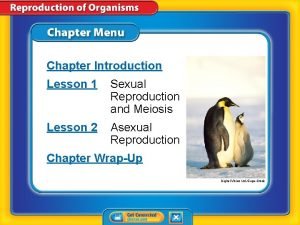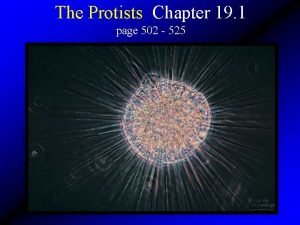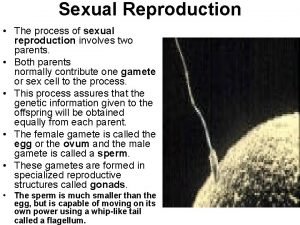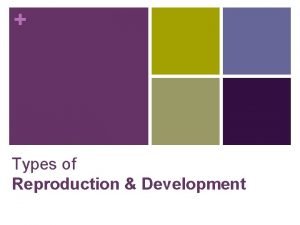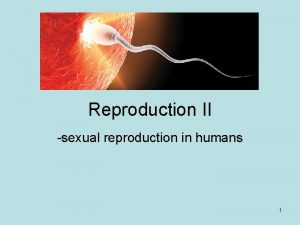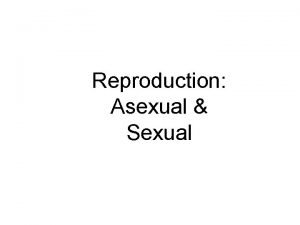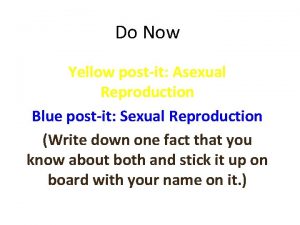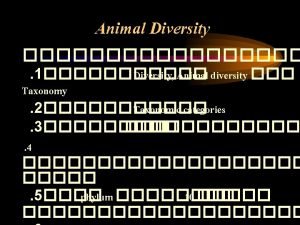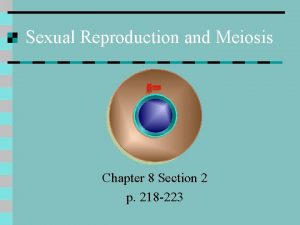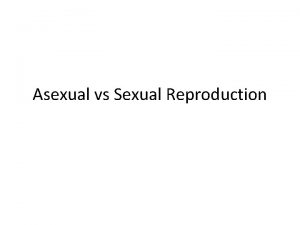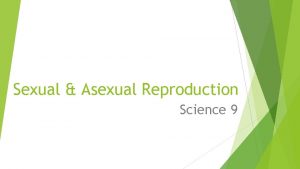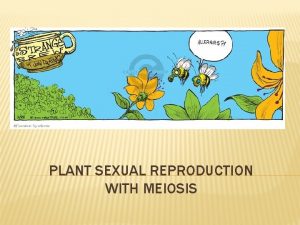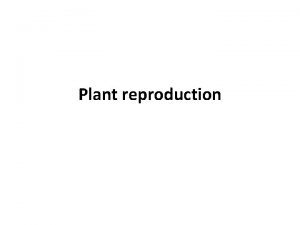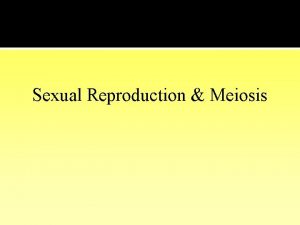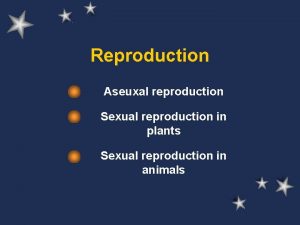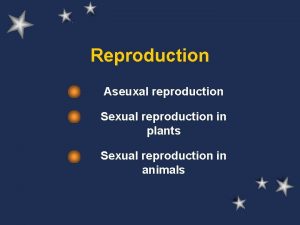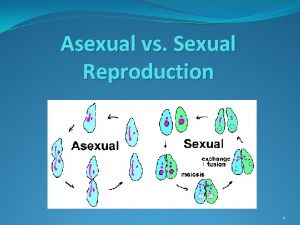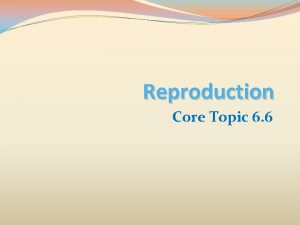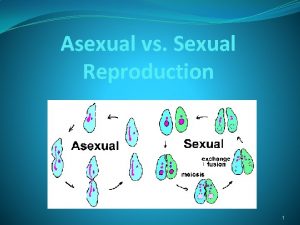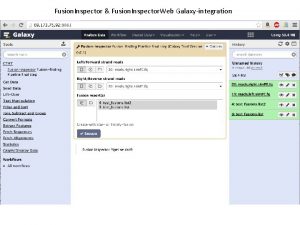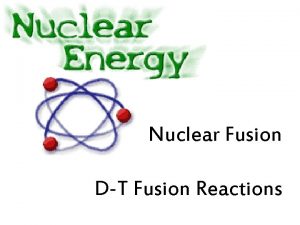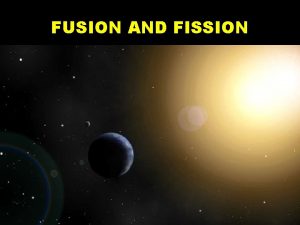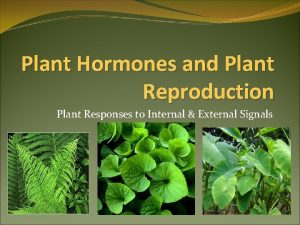Plant Reproduction Sexual Reproduction Sexual reproduction requires fusion






















- Slides: 22

Plant Reproduction

Sexual Reproduction • Sexual reproduction requires fusion of male cells in the pollen grain with female cells in the ovule. • List some advantages and drawbacks to sexual reproduction.

Terms to know: • Haploid: having a single set of chromosomes in each cell. • Diploid: having two sets of chromosomes in each cell. • Mitosis: cell division, which produces two genetically identical cells. • Meiosis: reduction division, which produces four haploid reproductive cells.

Plant Life Cycle

Alternation of Generations

Alternation of Generations • Plants have a double life cycle with two distinct forms: • Sporophyte: diploid, produce haploid spores by meiosis. • Gametophyte: haploid, produce gametes by mitosis.

Non-flowering plants • Mosses, ferns, and related plants have motile, swimming sperm. • What kind of environmental conditions would be required for reproduction in these plants? • What kinds of limits does external reproduction impose on these plants?

Moss Life Cycle

Fern Life Cycle

Gymnosperms • Gymnosperms have reduced gametophytes. • Male gametophyte is contained in a dry pollen grain. • Female gametophyte is a few cells inside of the structures that become the seed.

Gymnosperms

Conifer pollination • Conifers are wind-pollinated plants. • Chance allows some pollen to land on the scales of female cones. • Pollen germinates, grows a pollen tube into the egg to allow sperm to fertilize the egg. • What are some advantages and disadvantages to wind pollination?

Flowers

Pollen go-betweens • Showy flowers are the result of selection for more efficient pollination strategies. • Flower parts are modified leaves. Those that were brightly colored attracted insects in search of pollen. • Why would insects search for pollen? What other rewards do flowers offer? • What are advantages and disadvantages to relying on insects as pollinators?

Flower Parts PISTIL

Angiosperm Life Cycle

Double Fertilization

Flower to Fruit

Ovule to Seed

Seed Anatomy

Seed Germination

W O R K • Use what you have learned about plant life cycles to explain why most mosses and ferns live in moist environments, but flowering plants can live just about anywhere. T O G E T H E R
 Sexual and asexual reproduction in animals venn diagram
Sexual and asexual reproduction in animals venn diagram Sexual and asexual reproduction venn diagram
Sexual and asexual reproduction venn diagram Sexual reproduction and asexual reproduction
Sexual reproduction and asexual reproduction Vegetative reproduction requires mieosis.
Vegetative reproduction requires mieosis. Significance of sexual reproduction
Significance of sexual reproduction The kingdom protista contains
The kingdom protista contains Meiosis vs mitosis anaphase
Meiosis vs mitosis anaphase Sexual reproduction
Sexual reproduction Connecting the concepts sexual reproduction
Connecting the concepts sexual reproduction Sexual reproduction in paramecia is called _____.
Sexual reproduction in paramecia is called _____. гаструла бластула
гаструла бластула Sample example
Sample example Sexual reproduction in amoeba
Sexual reproduction in amoeba Sexual reproduction
Sexual reproduction A sexual reproduction in humans
A sexual reproduction in humans Chapter 10 sexual reproduction and genetics
Chapter 10 sexual reproduction and genetics Asexual or sexual reproduction
Asexual or sexual reproduction Asexual reproduction
Asexual reproduction Mitosis sexual reproduction
Mitosis sexual reproduction A sexual reproduction
A sexual reproduction Sexual reproduction
Sexual reproduction Sexual or asexual reproduction
Sexual or asexual reproduction Chapter 10 section 3 gene linkage and polyploidy
Chapter 10 section 3 gene linkage and polyploidy



